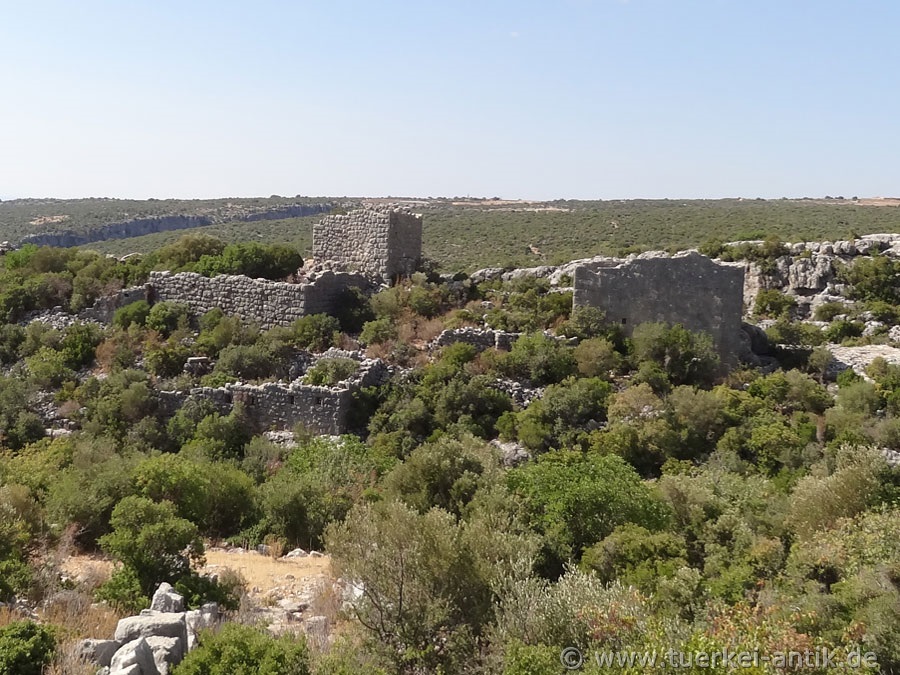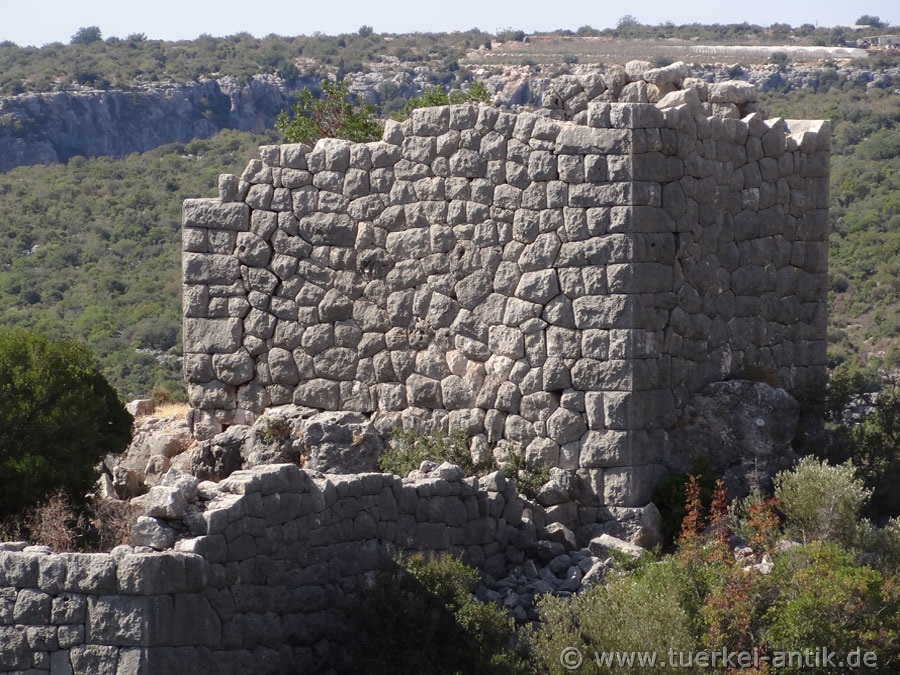 |
| Çatıören in Cilicia | |||
 |
|
||
| The western part of the settlement | |||
|
The ancient name of the settlement has not been passed down. Çatıören (Turkish for roof ruins) is the Turkish name. It is a ruined site from the Hellenistic-Roman early Byzantine period. The ruins are 7 km above the village Ayaş, the ancient Elaiussa Sebaste. |
|||
|
|
|||
| Temple of Hermes | |||
|
The ruins are grouped in a northwest-southeast direction along a valley that is as flat as it is narrow at this point, on the northwestern end of which there is a simple antenna temple with an area of about 130 square meters.
|
|||
|
|
|||
| Olbic Watchtower | |||
|
Southeast of the temple stands an Olbic tower in polygonal construction on the rock, with the same wall in front of it to the northeast. Below these are several houses of the same construction, as well as on the southern and eastern slopes of the rock nose and in the surrounding valley. The oldest buildings of the village date back to the 3rd to 2nd century BC. |
|||
|
|
|||
| Byzantinische Basilika | |||
|
|
|||
|
On the eastern side of the valley, just below the present street, stands the ruin of a three-nave basilica with galleries and choir walkway. Their ships are separated by a series of five or six columns with shafts and bases inside. Protruding cuboids at the northern corner of the west wall indicate that the construction of a narthex was planned. |
|||
|
|
|||
|
|
|||
| Byzantine Basilica | |||
| Photos: @chim | |||
| Translation aid: www.DeepL.com/Translator | |||
| Source: Wikipedia and others | |||
|
|
|||


